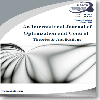Constructing small WEEE collection system in Istanbul: A decision support system and conceptual design proposal
Constructing small WEEE collection system in Istanbul: A decision support system and conceptual design proposal
___
- [1]ADEME Annual report. Electrical and electronic equipments. Data 2010. [Accessed on 20June 2015]. http://www2.ademe.fr/servlet/getBin?name=C1D8D3FB0D6D41BC332B8322BD6CDB1F_tomcatlocal1320332164546.pdf(2010).
- [2]Arshadi, M. and S.M. Mousavi, Multi-objective optimization of heavy metals bioleaching from discarded mobile phone PCBs: Simultaneous Cu and Ni recovery using Acidithiobacillus ferrooxidans, Separation and Purification Technology, 147, 210-219 (2015).
- [3]Çalışkan, Ç.O., Çılgın, K., Dündar, U. and M.C. Yalçıntan, İstanbul Dönüşüm Coğrafyası, Kentsel ve Bölgesel Araştırmalar Sempozyumu, 6-7 December 2012, Ankara, https://istanbuldonusumcografyasi.wordpress.com/bildiri-tam-metni/, [Accessed on December 13, 2015] (2012).
- [4]Canning, L., Rethinking market connections: mobile phone recovery, reuse and recycling in the UK, Journal of Business & Industrial Marketing, 21 (5), 320-329, (2006).
- [5]Çetinsaya Özkır, V., Efendigil, T., Demirel, T., Çetin Demirel, N., Deveci, M. and B. Topçu, A three-stage methodology for initiating an effective management system for electronic waste in Turkey, Resources, Conservation and Recycling, 96, 61-70, (2015).
- [6]Chi, X., Wang M.Y.L., and M.A. Reuter, E-waste collection channels and household recycling behaviors in Taizhou of China, Journal of Cleaner Production, 80, 87-95, (2014).
- [7]Darby, L. and L. Obara, Household recycling behaviour and attitudes towards the disposal of small electrical and electronic equipment, Resources Conservation and Recycling, 44 (1), 17-35, (2005).
- [8]Ehrgott, M. and X. Gandibleux, Multiple Criteria Optimization: State of the Art Annotated Bibliographic Surveys, Kluwer Academic Publishers, Boston,(2002).
- [9]Figueiredo, J.N., and S.F. Mayerle, Designing minimum-cost recycling collection networks with required throughput, Transportation Research Part E: Logistics and Transportation Review, 44 (5), 731-752, (2008).
- [10]Gomes, M.I., Barbosa-Povoa, A.P., and A.Q. Novais, Modelling a recovery network for WEEE: A case study in Portugal, Waste Management, 31(7), 1645-1660, (2011).
- [11]Goodship, V. and A. Stevels, Waste electrical and electronic equipment (WEEE) handbook", Woodhead publishing, Cambridge, UK,(2012).
- [12]Grunow, M. and C. Gobbi, Designing the reverse network for WEEE in Denmark, CIRP Annals -Manufacturing Technology, 58(1), 391-394, (2009).
- [13]Hagelüken, C., Towards bridging the materials loop -how producers and recyclers can work together, EU-US Workshop on Mineral Raw Material Flows & Data, 13, 2012, Brussels. (http://ec.europa.eu/enterprise/policies/rawmaterials/files/docs/three_hagelueken_eu_us_2012_09_en.pdf). [Accessed on July 7, 2015] (2012).
- [14]Kiddee, P., Naidu, R., and M. H. Wong, Electronic waste management approaches: An overview, Waste Management, 33(5), 1237-1250, (2013).
- [15]Nnorom, I.C. and O. Osibanjo, Toxicity characterization of waste mobile phone plastics, Journal of Hazardous Material, 161, 183-188, (2009).
- [16]Oguchi, M., Sakanakura, H., Terazono, A., and H. Takigami, Fate of metals contained in waste electrical and electronic equipment in a municipal waste treatment process, Waste Management, 32, 96-103, (2011).
- [17]Ongondo, F.O. Williams, I.D. and T.J. Cherrett, How are WEEE doing? A global review of the management of electrical and electronic wastes, Waste Management, 31(4), 714-730, (2011).
- [18]Özkır, V. and H. Başlıgil, Modeling Product Recovery Processes in Closed Loop Supply Chain Network Design. International Journal of Production Research, 50(8), 2218-2233, (2012).
- [19]Reuter, M. A.,Hudson, C., van Schaik, A., Heiskanen, K., Meskers, C.,Hagelüken, C., UNEP Metal Recycling: Opportunities, Limits, Infrastructure, A Report of the Working Group on the Global Metal Flows to the International Resource Panel,(2013).
- [20]Ruzika, S., and Hamacher, H.W., "A survey on multiple objective minimum spanning tree problems". In J. Lerner, D. Wagner, and K. A. Zweig (Eds.), Algorithmics of Large and Complex Networks, Lecture Notes in Computer Science, 5515, 104-116, Springer, (2009).
- [21]Solomon, R., Sandborn, P. and M. Pecht, Electronic Part Life Cycle Concepts and Obsolescence Forecasting, IEEE Transaction on Components and Packaging Technologies, 707-717, (2000).
- [22]Wang, Y. and T.M.S. Elhag, "On the normalization of interval and fuzzy weights", Fuzzy Sets and Systems, 157, 2456 -2471, (2006).
- [23]Widmer, R., Oswald-Krapf, H., Sinha-Khetriwal, D., Schnellmann, M. and H. Böni, Global perspectives on e-waste, Environmental Impact Assessment Review, 25, 436-458, (2005).
- [24]Yadav, S., Yadav,S. and P. Kumar, Metal toxicity assessment of mobile phone parts using Milli Q water, Waste Management, 34(7), 1274-1278, (2014).
- [25]Ylä-Mella,J., Keiski, R.L., and E. Pongrácz, Electronic waste recovery in Finland: Consumers' perceptions towards recycling and re-use of mobile phones, Waste Management, 45, 374-384, (2015).
- [26]http://www.statista.com/statistics/270243/global-mobile-phone-sales-by-vendor-since-2009/Statistica -Global mobile phone sales data [Accessed, 13 July 2015
- ISSN: 2146-0957
- Yayın Aralığı: 4
- Yayıncı: Prof. Dr. Ramazan YAMAN
Canal surfaces in 4-dimensional Euclidean space
Betul BULCA, Kadri ARSLAN, Bengu BAYRAM, Günay ? OZTRK
Pricing in M/M/1 queues when cost of waiting in queue differs from cost of waiting in service
Copula approach to select input/output variables for DEA
Olcay ALPAY, Elvan HAYAT AKTURK
New soliton solutions of the system of equations for the ion sound and Langmuir waves
Hasan BULUT, Seyma Tuluce DEMİRAY
Optimizing the location-allocation problem of pharmacy warehouses: A case study in Gaziantep
Eren ÖZCEYLAN, Cihan ÇETİNKAYA, Selçuk KÜRŞAT İŞLEYEN, Ayşenur USLU, Mehmet ERBAŞ
Brezzi-Pitkaranta stabilization and a priori error analysis for theStokes control
Artificial bee colony algorithm variants on constrained optimization
